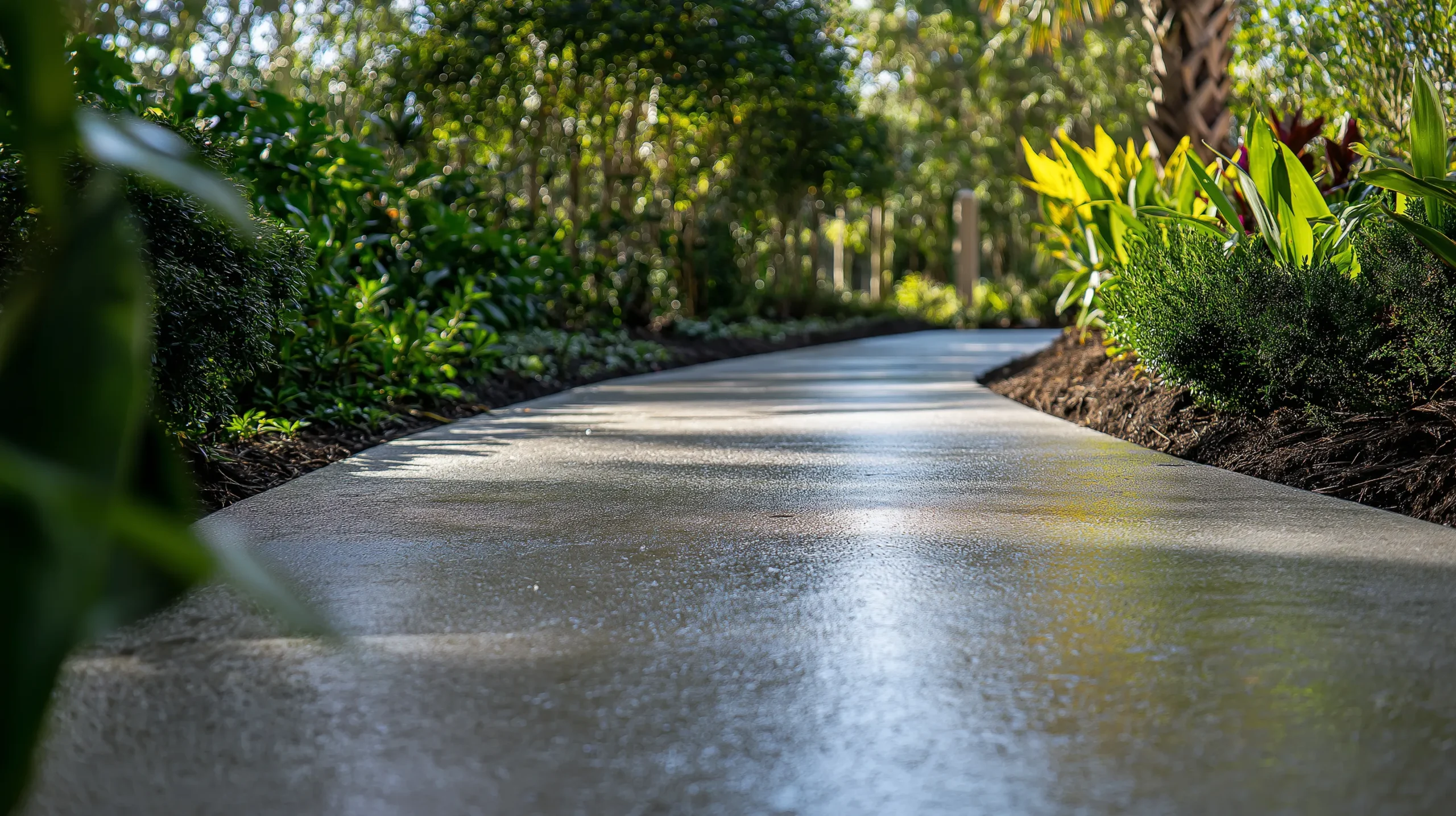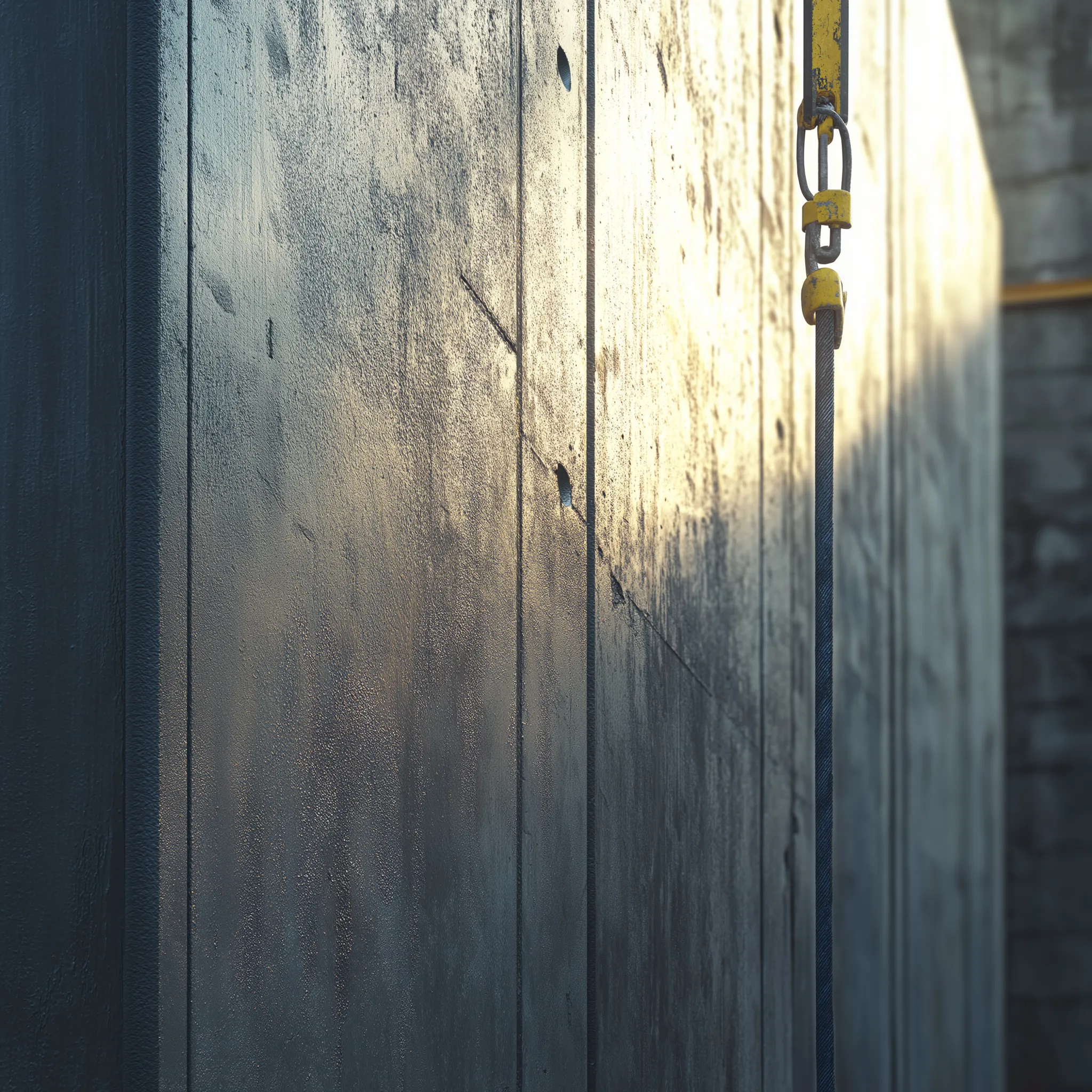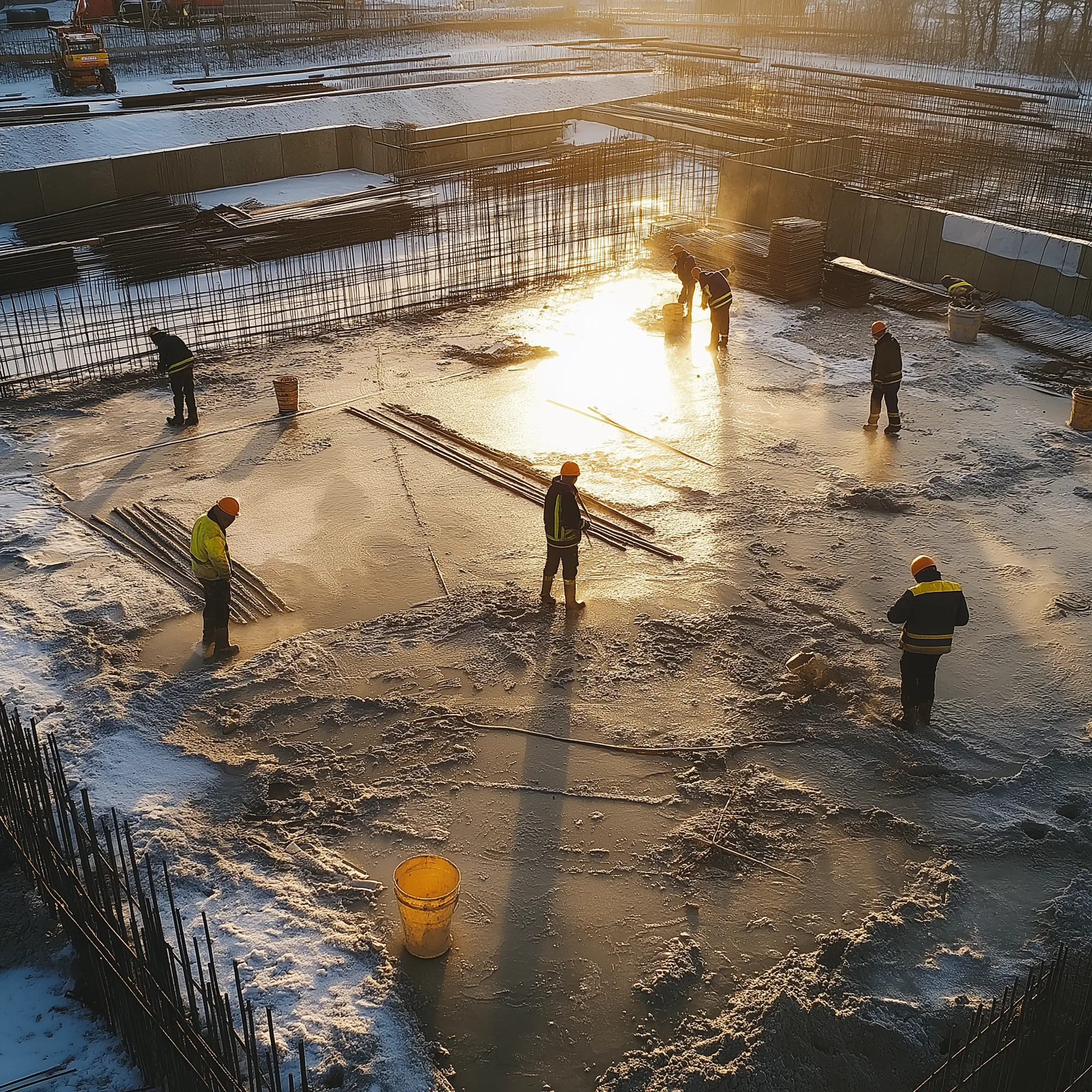Preparation
Concrete Substrate
Cleaning, roughening, and presoaking the concrete substrate with water for 18-24 hours are essential steps to be taken before placing grout. Cleaning and roughening will insure a proper bond of the grout to the substrate. Presoaking the concrete substrate with water will prevent a dry concrete foundation from absorbing or wicking water out of the grout mixture prior to its final set. A dry concrete substrate could cause shrinkage of newly placed non-shrink grout, particularly when placing grouts in a stiff or “dry-pack” consistency. Do not take a chance – always presoak the concrete. Remove excess water just prior to placing grout. Leave surface damp.
Baseplate and Sole Plates
Baseplates and sole plates should be aligned, shimmed, and cleaned of all grease, dirt, loose rust and scale. Air vents may have to be provided in order to eliminate undesirable air pockets. This is especially true for baseplates with shear keys or stiffeners, which create compartments on the underside. Baseplate heights will necessarily vary due to a number of factors, including size of the plates and whether the plate is for a dynamic, vibrating machine or for a static load, structural steel column. Generally, it is not recommended that cement-based grout be used in depths less than 25 mm (1”). In cases where the grout depth exceeds 100 mm (4”), up to 50% by weight addition of 10 mm (3/8”) pea gravel may be added.
Forming for Cementitious Grout Placement
When forms are required they should be sturdy, caulked and watertight, oiled and constructed to allow a space of approximately 25 mm (1”) around the edge of the base-plate. Select one side of the form to be the placement side. The forms on the placement side should be spaced further from the baseplate to accommodate a 6-8” (150-200 mm) elevated “head box” or ‘flow box” into which the grout will be placed and funneled under the plate. Minimum form elevation should be sufficient to allow for complete gravity fill under the plate. Provide for expansion joints on long pours.
Temperature Control
Follow ACI guidelines for cold weather or hot weather concreting. Many of these principles apply to cement-based, non-shrink grouts. Under cold weather conditions proper preparation would include warming the concrete substrate and baseplate to 4ºC (40ºF) or above, storing the grout in a warm area, and using warm, up to 32ºC (90ºF), mixing water. In hot weather the most common steps include using iced or cold mixing water and, if possible, storing the grout in a shaded or cool area. Cooling the baseplate with cold water is also advisable. In any case, always take steps to moderate temperature extremes.
Grout Placement: “Plan Your Pour”
Consistency
The proper placement consistency will vary according to the clearance of the baseplate, the complexity of the job, and the method of placement. On any one particular project it is likely that the grout will be placed at a wide variety of consistencies. Some will be dry-packed, some will be plastic or flowable, and some may necessarily be placed in a fluid consistency. It is important, first of all, that any grout chosen will remain non-shrink at all placement consistencies. A grout should be chosen because of its conformance to the non-shrink requirements of ASTM C-1107 at ALL possible placement consistencies, from the stiffest to the most fluid.
Mixing Large Batches
Mix grout in gasoline powered, paddle-type mortar mixers, not in rotary drum type “cement mixers”. It is recommended that more than one mixer be on site and used to insure continuous mixing and rapid placement, in the event of mechanical breakdown. Prepare mixer by mixing one very fluid bag of grout. This is referred to as “buttering” the mixer. Discard “butter batch”. Determine suitable batch size for the project. For fluid consistency, add two-thirds of the recommended water requirement to the empty mixer, start mixer, slowly add grout powder. Mix to a doughy state and then add water to desired placement consistency. Mix grout for 5 minutes to activate all ingredients and until a uniform, lump-free consistency is obtained. Follow manufacturer’s recommendations in mixing grout and water requirements. For stiffer consistencies, add total water at the beginning of the mixing cycle.
Mixing Small Batches
For one bag (up to 55 lbs.) batches, use a 5-gallon (19 liter) pail. For fluid consistency, add two-thirds of the recommended water. Slowly add grout powder to water. Mix with a ½” variable speed drill with a jiffy mixer attachment. Mix to a uniform doughy state. Add additional water to desired consistency. Mix at medium speed for five minutes to activate all ingredients. Do not exceed maximum water requirements stated on bag. Do not overmix. For stiffer consistencies, add total water at the beginning of the mixing cycle.
Depth of Pour
For grouting depths of 100 mm (4”) or less, SpecChem’s cementitious grouts should be used as packaged, with only the addition of water. On large or deep grouting applications it may be necessary to extend the grout with the addition of up to 50% by weight, 10 mm (3/8”) pea gravel. Due to the high percentage of portland cement found in today’s high strength grouts, a great amount of exothermic heat is generated during the early stages of hydration. On pours of over 100 mm (4”), the addition of 10 mm (3/8”) pea gravel will serve as an effective heat dissipater while affecting neither the non-shrink nor the compressive strength characteristics of these grouts. If pea gravel extension is inappropriate or unacceptable for a particular grout installation, the grout may be poured in multiple75-100 mm (3-4”) lifts. Consult the grout manufacturer to determine suitability of this procedure.
“Place Continuously and Rapidly”
Once the surfaces and baseplate have been prepared, the consistency determined, and the grout mixed, it is now ready to be placed “continuously and rapidly”. Begin placement and continue placement from the placement side only. This will avoid cold joints and will minimize the chance of air entrapment. Grout anchor bolt holes and keyways first. Utilize head boxes and grout pumps where their use is beneficial.
The use of concrete vibrators, straps, and rods to help move the grout should be used sparingly. Excessive vibration may cause bleeding and segregation of a fluid grout and should be avoided. Where necessary, use a grout with an extended work time, such as SpecChem’s Spec Precision Grout Premier, to assist placement.
Place grout at least 5 mm (1/4”) above the bottom of the baseplate to insure the complete filling of the void. Cover immediately with wet rags or curing compound.
Finishing
Just prior to final set it is recommended that exposed grout shoulders be cut back at a 45º angle from the base of the plate to the concrete foundation. This configuration uniformly transfers loads from the baseplate to the foundation. Other types of finishing may be desirable and satisfactory depending on the experience of the owner and engineer or the requirements of the job. If grout shoulders are cut, curing must be resumed immediately thereafter. SpecChem’s Specpoxy C.J. is recommended where quick, easy trimming is desirable.
In Place Protection
Curing
The single biggest cause of hairline cracks and shrinkage in a high quality cementitious grout is improper or nonexistent curing procedures. Therefore, all cement-based grouts should be carefully and immediately cured with wet rags, covered with plastic sheeting, and later, coated with a high solids, membrane curing compound. It should be noted that with stiff or dry pack grouts wet curing is highly desirable and sometimes critical. In every case, the sooner the curing procedure is initiated, the better.
Temperature
After placement, protect grout from temperature extremes during the first 48-72 hours. Of primary concern is to protect it from freezing. Grout temperature should be maintained at a minimum of 4ºC (40ºF) until the grout reaches 3000 psi (22 MPa).
Jobsite Vibration
After placement, try to reduce or eliminate for the first day any excessive jobsite vibration caused by nearby operating machinery. During cold conditions, eliminate external vibration until grout reaches 3000 psi (22 MPa).





